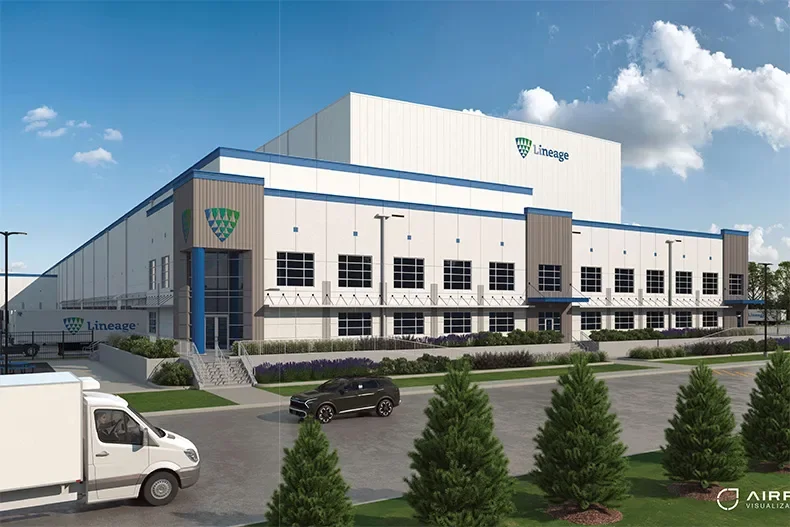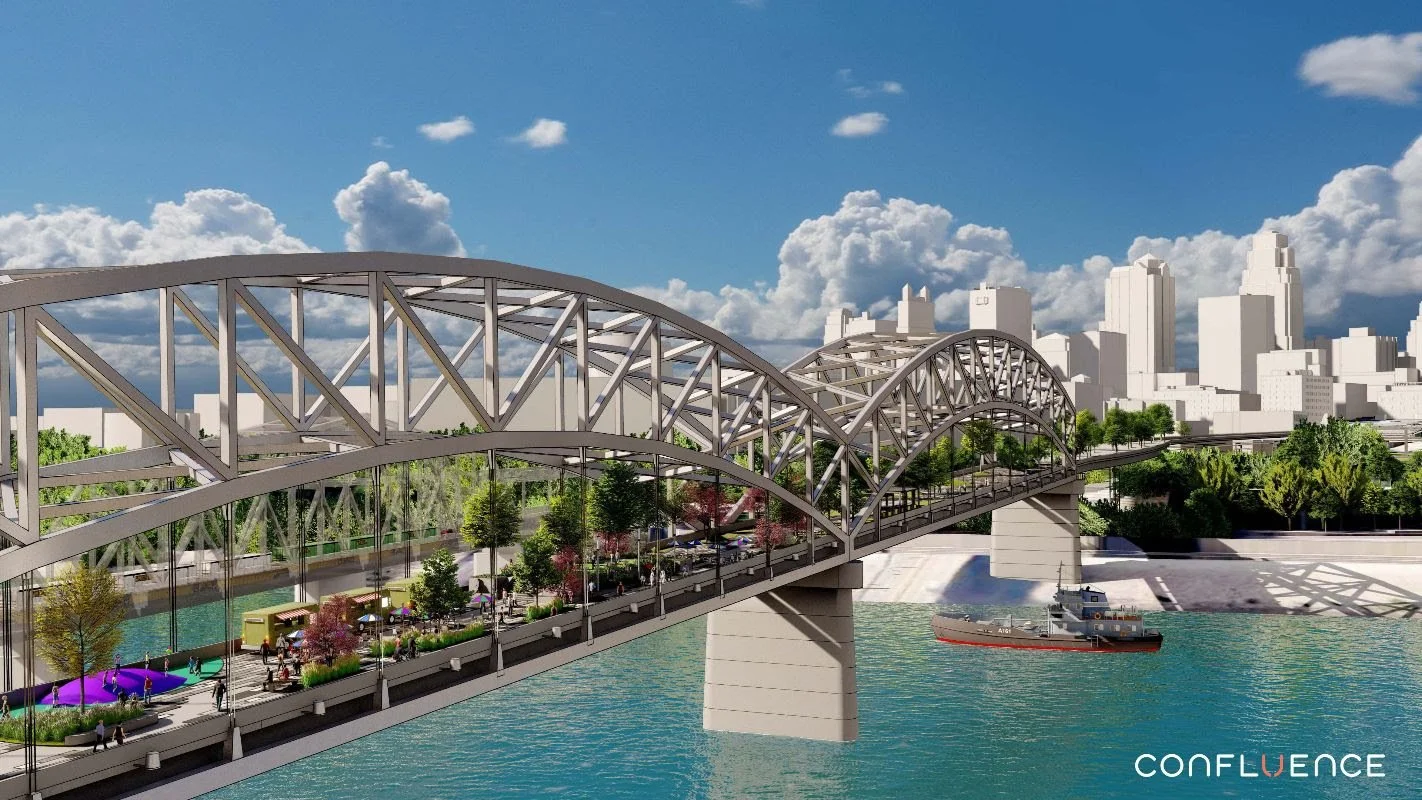When Brian Platt began his tenure as city manager of the City of Kansas City, Missouri, in December, 2020, the two most frequent complaints he heard were that Kansas City can’t plow the snow and that the city is full of potholes.
Platt discussed how he has addressed those concerns at last week’s luncheon of the KC Downtowners, just a few days after Kansas City experienced its largest snowfall in 32 years.
Soon after Platt arrived in Kansas City, it snowed.
“I remember getting on a snow plow with someone who had been doing it for 20 years. Big truck. We met up at the command center, and we got a truck and went to go get some salt from the salt dome. . . . We’re driving through the parking lot and I see a row of 10 or 20 trucks covered in snow. Snow plows. And I’m asking, what are we doing with those? I’m told we don’t usually have enough drivers, but we’ve got all these trucks. . . . We’re driving around, and I’m hearing these stories about how we don’t really pre-treat the roads before the storms. We just kind of do one pass through neighborhoods. Just check the box for each neighborhood was the approach. Just send a truck down one time at some point and call it a day,” said Platt.
Platt recognized right away that there are several easy ways to change the snow removal procedure. He had many conversations with city staff about ways to get more drivers and more trucks without spending any additional funds.
“We found 100 more drivers week one,” he said.
Those drivers were city employees like health inspectors, building inspectors, and garbage truck drivers who are not otherwise on the roads during snowstorms. In an organization with 4,500 employees, Platt said it was easy to find 100 employees who already drove for the city. In addition, the city’s vehicle fleet had many pickup trucks on which the city could install a plow on the front, remove the bed, and install a salt spreader on the back.
“So we did that. We found 100 drivers and 50 trucks without really having to do anything,” said Platt.
With more manpower and trucks, Platt said the city is much more aggressive when it comes to snow removal. Two days before the recent snowstorm began, the city pretreated the roads using a magnesium chloride salt, which is much more
effective to melt ice when the temperature drops below 20 degrees than the calcium chloride rock salt used by many other jurisdictions.
In addition, snow removal is a 24-hour operation, with drivers working 12-hour shifts from days before the storm starts until everything is clear. The snow is plowed curb to curb rather than a single path the width of the plow blade.
Platt said the city instituted a digital route mapping system. Each plow is equipped with a tablet, which allows the city staff and the drivers to track how much of the city has been plowed and where.
“We’ve got 6400 miles of streets to take care of. We have 103 routes . . . that’s 60 miles a route. . . . You might miss a cul de sac. You might not get curb to curb everywhere, . . . but we’re going after it,” he said.
Platt said every neighborhood has the same priority.
The city also is trying to rebuild its fleet, Platt said. The city has 300 trucks in its fleet and 400 drivers in its system. Many of those trucks are 2023 and 2024 pickup trucks that easily convert to snow plows. No commercial driver’s license is required to operate them. In fact, Platt himself, as well as other department heads, have been out on the streets plowing in city-owned pickup trucks.
“As city leaders, we have to listen to the people of the city. A lot of what we do involves just hearing people out. And people in the city want to be heard. . . . That’s customer service. That’s just what we’re all about now,” Platt said.
With respect to tackling street repair, Platt said the city has made tremendous improvements since he started as city manager. Kansas City is paving “exponentially more” than it ever has.
“Rather than putting band-aids on all these potholes, we’re building new streets. We’re just going to redo them. Inevitably, if you’ve got a lot of potholes, that means the street is failing. It’s just not in good condition anymore,” he said.
Last year, Kansas City rebuilt 519 miles of streets. In the past three and one-half years, Platt said the city has rebuilt 1500 miles, which is 25 percent of the city’s streets.
Platt said the city added $10 million to the budget last year to tackle sidewalk repairs.
Platt addressed measures the city is taking to prepare for the 2026 FIFA World Cup. The city is focused on making Kansas City look great.
“We’re going to focus a lot on business districts and places we think people are going to be traversing. . . . We want to not go too crazy and spend too much money building a bunch of things that, after the three months of the World Cup, we just don’t have anything to do with, which happens in a lot of places. . . . We don’t want to waste our money, but thinking about what are those things that we’re going to do to make our city look nicer,” he said.
One idea the city is pursuing is making improvements to the secondary corridor between Downtown and the stadiums, adding safe mobility lanes for bikes and scooters. In addition, there are plans to transform Yvonne Starks Wilson Park into a destination park with some FIFA relevance like mini pitches for soccer.
Platt also addressed Kansas City’s “visionary project” of creating a park over Interstate 670—the South Loop park, which he projects to break ground perhaps in March. He also expects that at least two of the four sections of the project will be completed for use by the World Cup, but likely not the full park.
Platt does not foresee the city tackling the North Loop in the next 10 years because there still is adjacent land housing surface parking lots that can be developed.
“Why would we make land for billions of dollars when we already have land that’s available to develop? Once all those surface lots get developed and we need more land Downtown and there’s a demand for it, then we can spend the money and do it that way because there’s a need,” Platt said.
Header Image: Brian Platt addresses a group at the January KC Downtowners luncheon. Image credit: Marcia Charney







